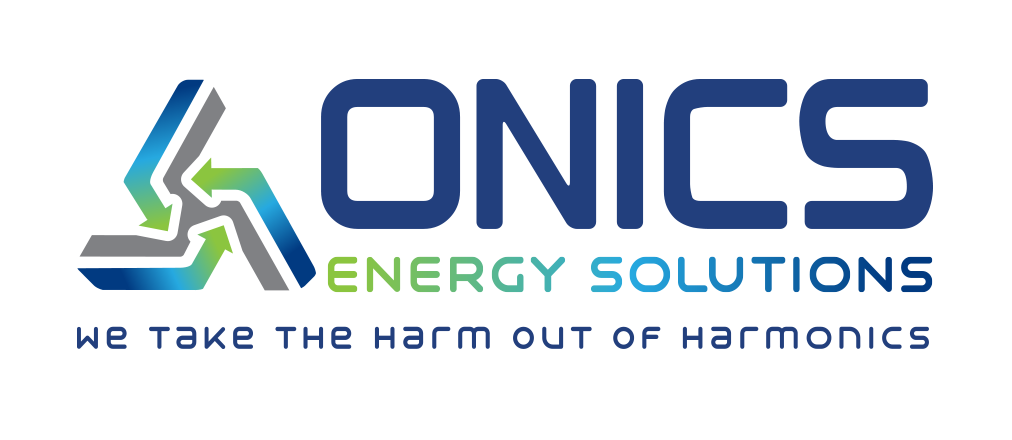Energy Savings Case Study: How A PCB Manufacturer Reduced kWh by 26.8%
Onics Energy Solutions recently installed its cutting-edge OES-11 Passive Neutral and Ground Harmonic Filters at a printed circuit board (PCB) manufacturing facility in Anaheim, California and was able to deliver verified energy savings of 26.8 percent. In addition, the facility was awarded an energy incentive rebate of more than $50,000 from the local utility company.
Problem: Harmonics on Neutral and Ground
Due to pronounced levels of harmonics on neutral and ground, the facility experienced reduced equipment reliability and increased energy costs. The non-power harmonics led to lower power quality from the utility, higher peak currents, and considerable energy losses from neutral and ground parasitic loads.
In addition, the heat caused by neutral and ground harmonics negatively impacted the performance and life expectancy of critical manufacturing equipment.
Causes of Harmonics on Neutral and Ground
The most common cause of harmonic distortion in PCB manufacturing facilities is non-linear loads from sources including:
Variable Frequency Drives (VFDs)
Uninterruptible Power Supplies (UPSs)
Switch Mode Power Supplies (SMPSs)
Computer Numerical Control (CNC) Machines
Arc Welding Machines
Induction Heating Equipment
Automated Assembly Robots
Incandescent and LED lighting systems
HVAC systems and many other types of chip-driven equipment
How To Decrease Energy Waste with a Passive Harmonic Filter
To combat the harmful effects of harmonics, the manufacturer installed Onics OES-11 Passive Neutral and Ground Harmonic Filters throughout the entire facility. The Onics passive harmonic filter is not a power factor correction device. Instead, this passive, inductive, and non-invasive device mitigates - and in some cases eliminates - high level harmonic waveforms on neutral and ground. It is installed in parallel on the cold side of each 480V/277V and 208V/120V wye-connected electrical panel and ground application location throughout a facility. The device is rated for panels up to 600V.
Being a low pass inductive filter, the Onics OES-11 runs in parallel with neutral or ground - not in series - so the filter can be installed on any size electrical service and does not absorb a substantial amount of energy while mitigating harmonic content on neutral and ground..
Once installed, the Onics OES-11 filters harmonic distortion on the non-power side, smoothing out what is fed back to the transformer through ground, so the facility does not have to load up the transformer sub and main any more than necessary.
Installing The Onics OES-11 Passive Harmonic Filter
The Onics OES-11 passive harmonic filter installation was completed in a seamless 5-step process:
Initial Site Survey and Installation Preparation
First, Onics prepared for the installation by carrying out a site survey walkthrough to obtain an accurate count of the facility’s meters, sub-meters, electrical panels, and ground applications. During the site survey, any potential installation challenges were also noted by the Onics team.
Continuous Revenue-Grade Monitoring System Installation
Next, a team of licensed electrical contractors installed the Empath ECMS-E1 continuous revenue-grade monitoring system at the main. The Empath ECMS-E1 is leveraged by Onics to provide the client with visibility into the facility’s power quality and harmonics levels.
M&V Energy Consumption Baseline Established
Afterwards, an independent, third-party, certified Measurement & Verification (M&V) Energy Expert calculated an energy consumption baseline for the facility and reviewed it with facility management for approval before moving forward. The energy consumption baseline was calculated by examining:
Interval metering data from the electrical utility
Production data for the manufacturing facility
External variables including outside temperature obtained from the National Oceanic and Atmospheric Administration (NOAA)
Onics Passive Harmonic Filters Installation
Onics then deployed a team of licensed electrical contractors during a phased shutdown of the facility to install the Onics OES-11 passive harmonic filters. De-energizing the facility is not necessary since Onics OES-11 filters are passive, inductive, and installed on the cold side of panels, but to ensure the safety of the installation team, it is recommended.
Each Onics OES-11 passive neutral and ground harmonic filter took an average of 30 minutes to install. The Onics OES-11 filters were hardwired in parallel on every wye-connected electrical panel and ground application noted in the initial site survey. Depending on space available inside each panel, the Onics OES-11 filters were installed either internally or externally.
If a neutral bus bar was not present in the electrical panel, the installers connected the OES-11 passive harmonic filter to the ground bar within the panel.
Energy Savings Results Audit and Verification
After a reporting period of more than 120 days, the independent Measurement & Verification Energy Expert analyzed the updated data sets and presented a validated summary of energy savings.
The energy savings data and calculations were also verified by the local utility and a third-party data science company.
Energy Savings Results with Onics Energy Solutions
By installing the Onics OES-11 passive neutral and ground harmonic filter, the printed circuit board manufacturer experienced:
Decreased equipment overheating
Increased equipment and electrical system reliability
Significant advancements toward its ESG goals
And a resounding 26.8 percent kWh reduction
In addition, the facility was awarded an energy incentive rebate of more than $50,000 from the local utility company.
